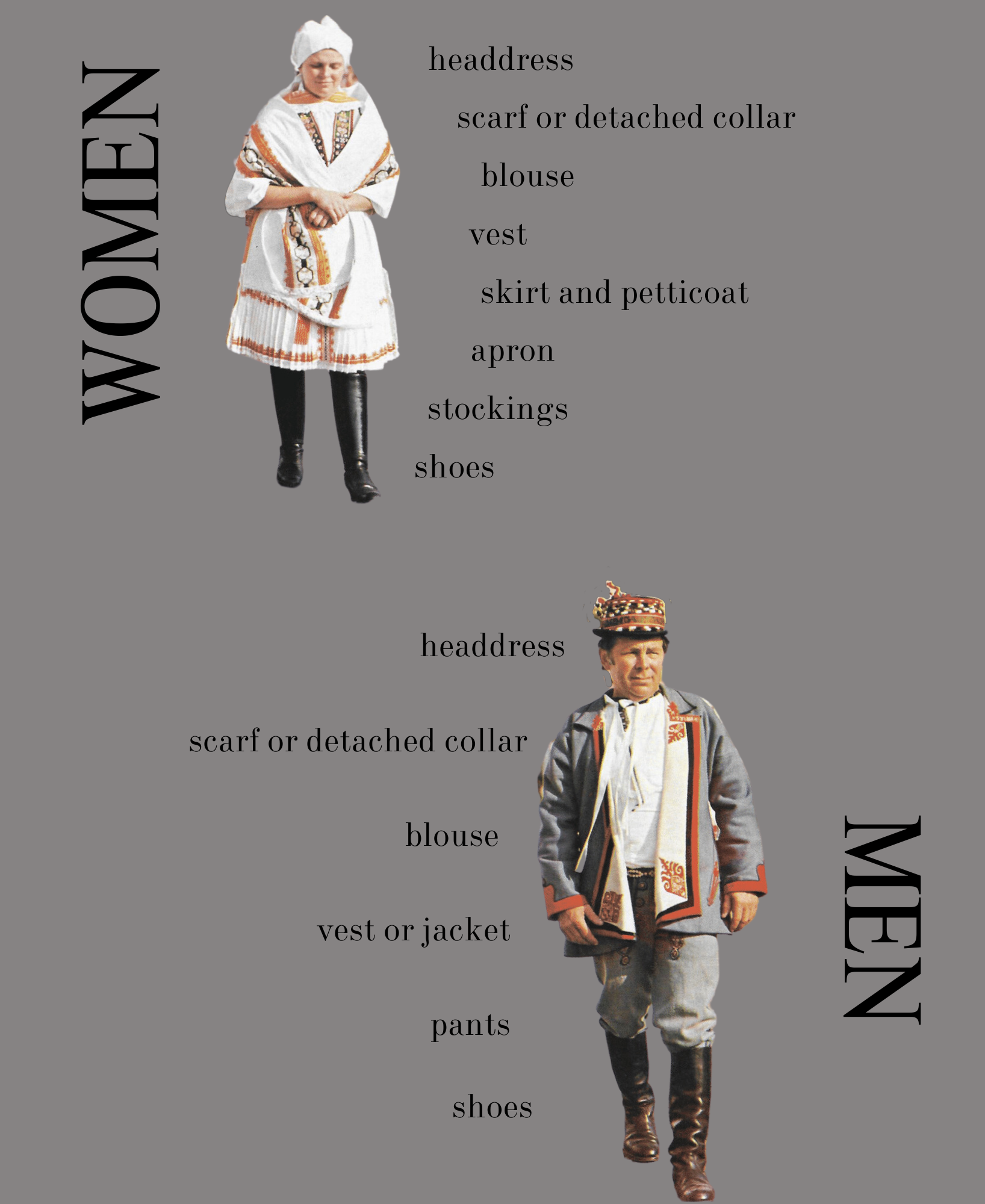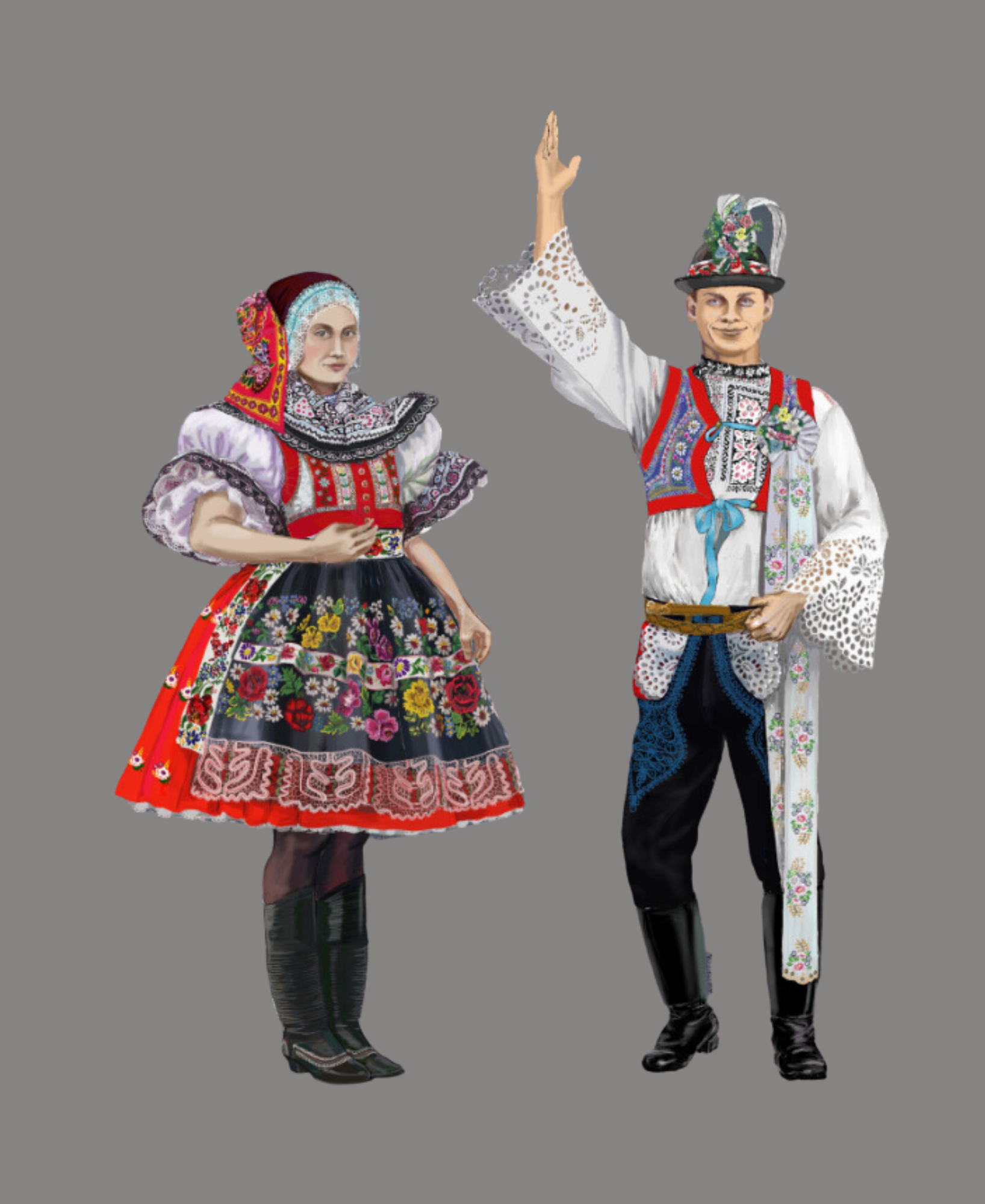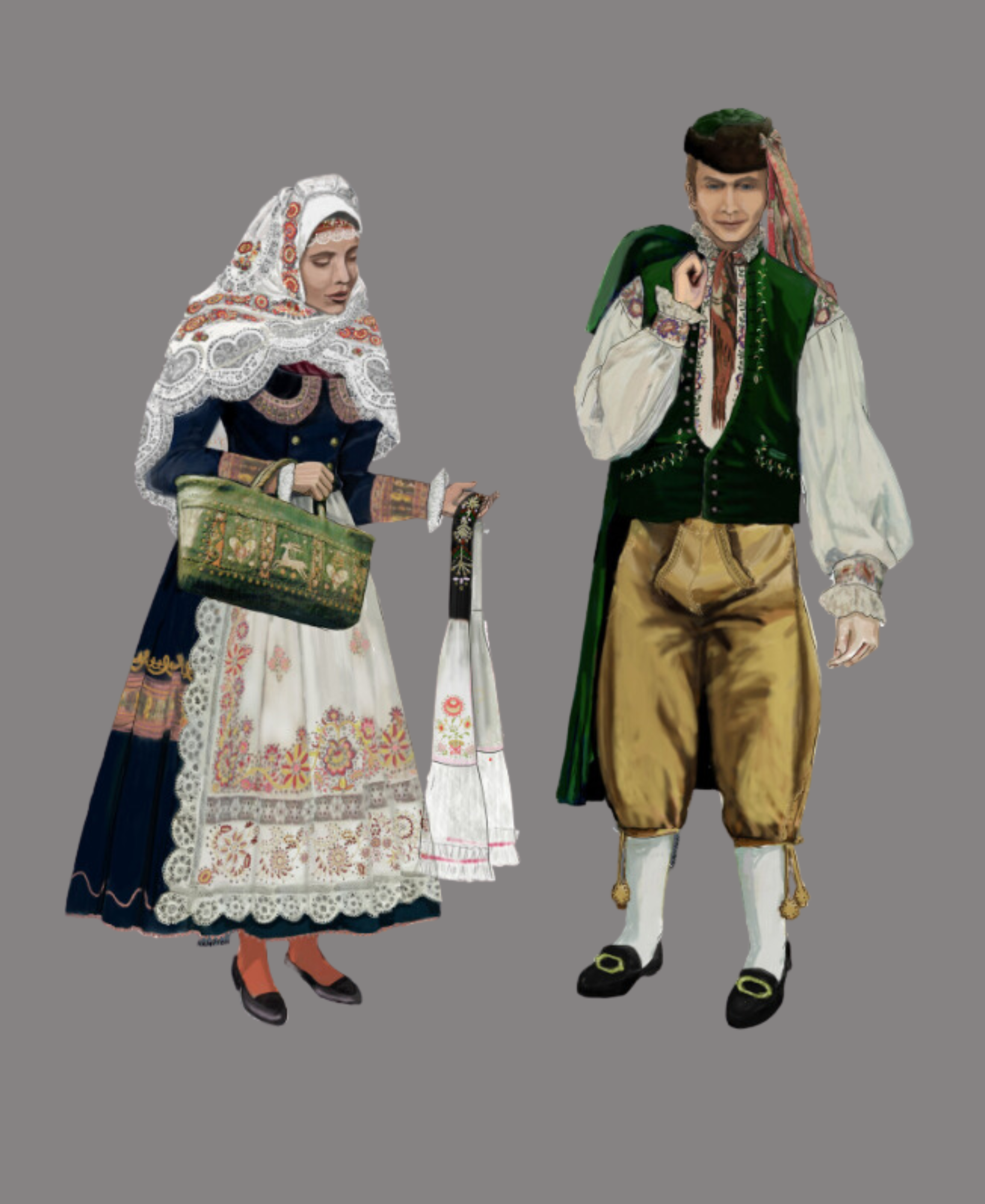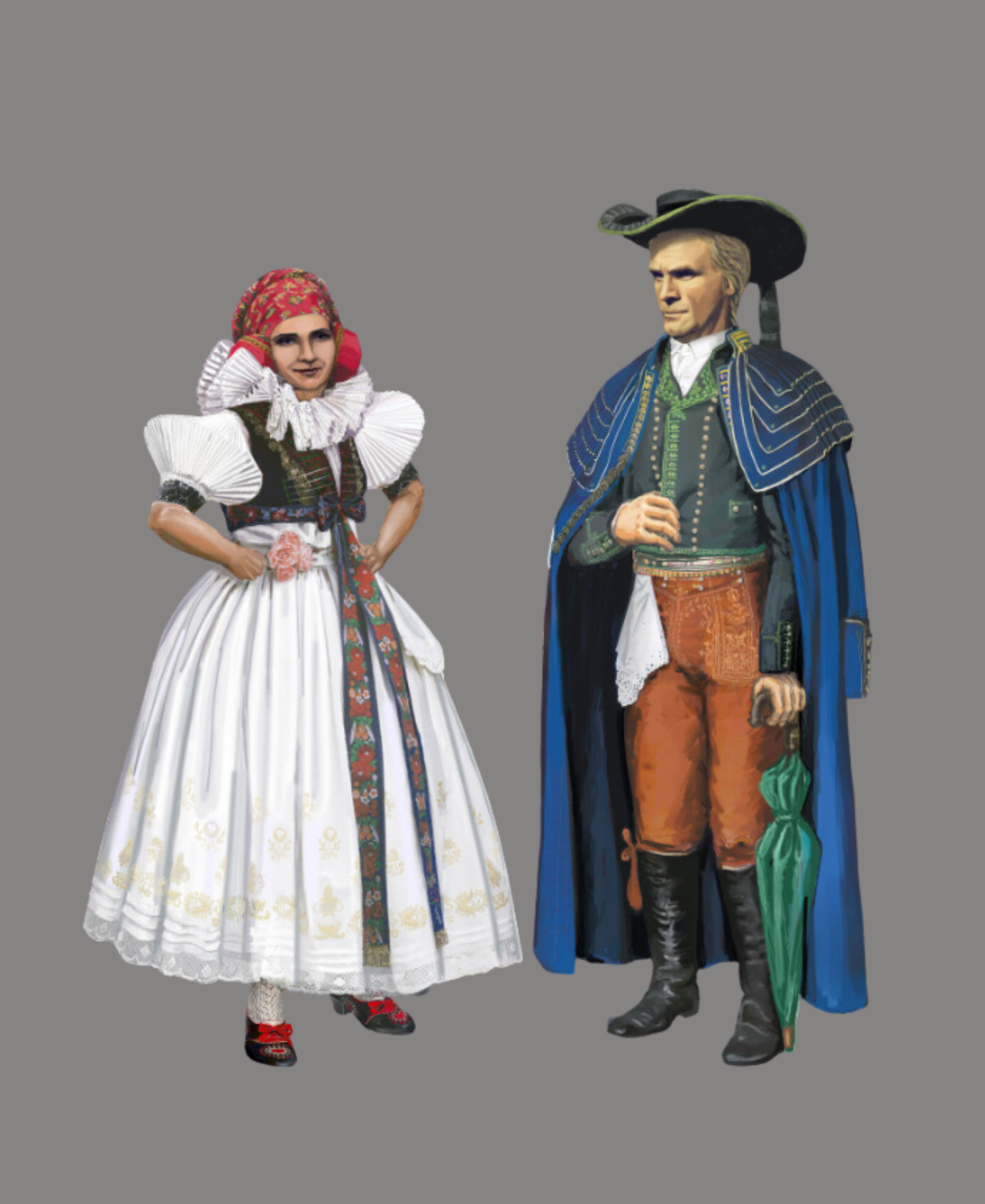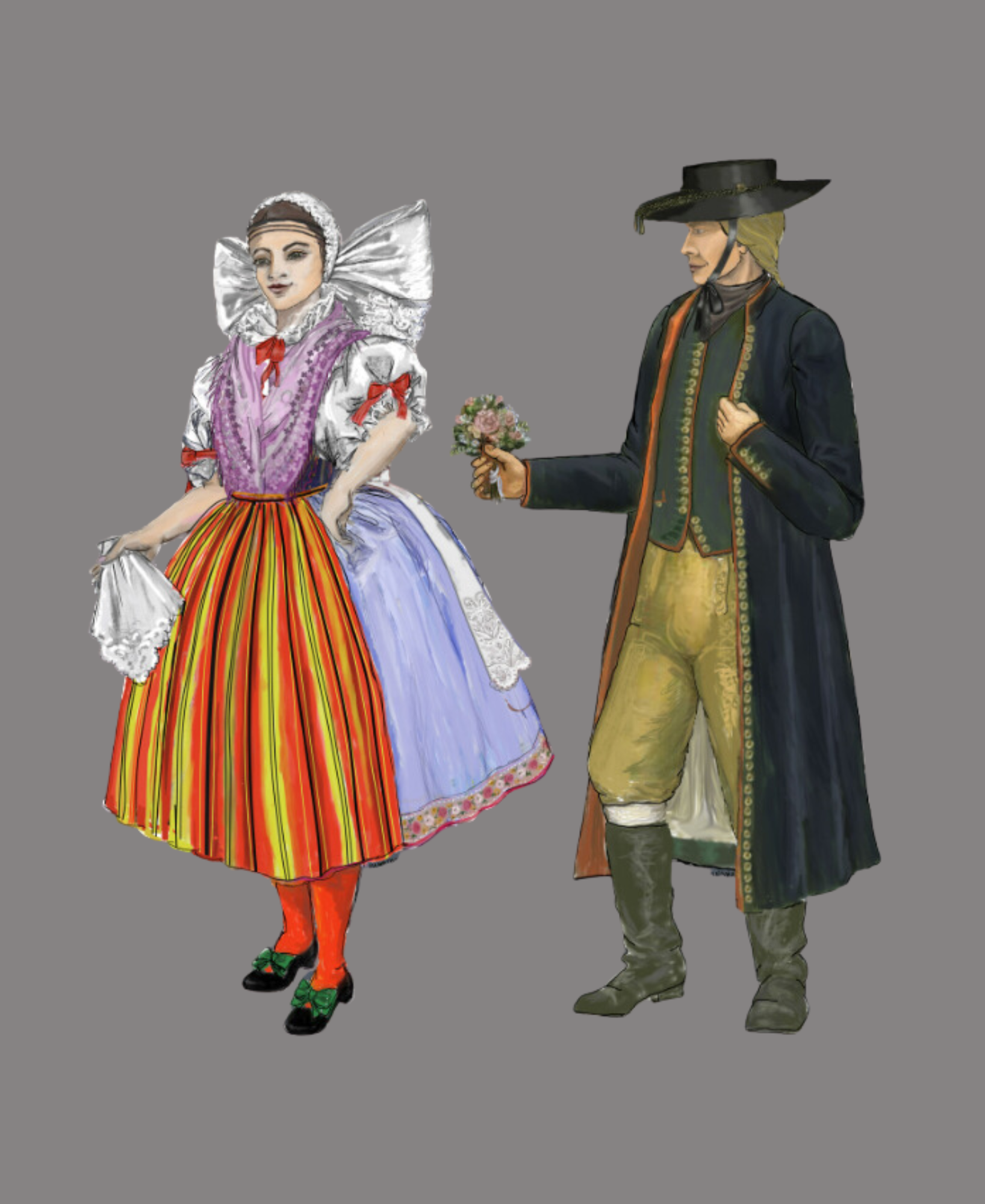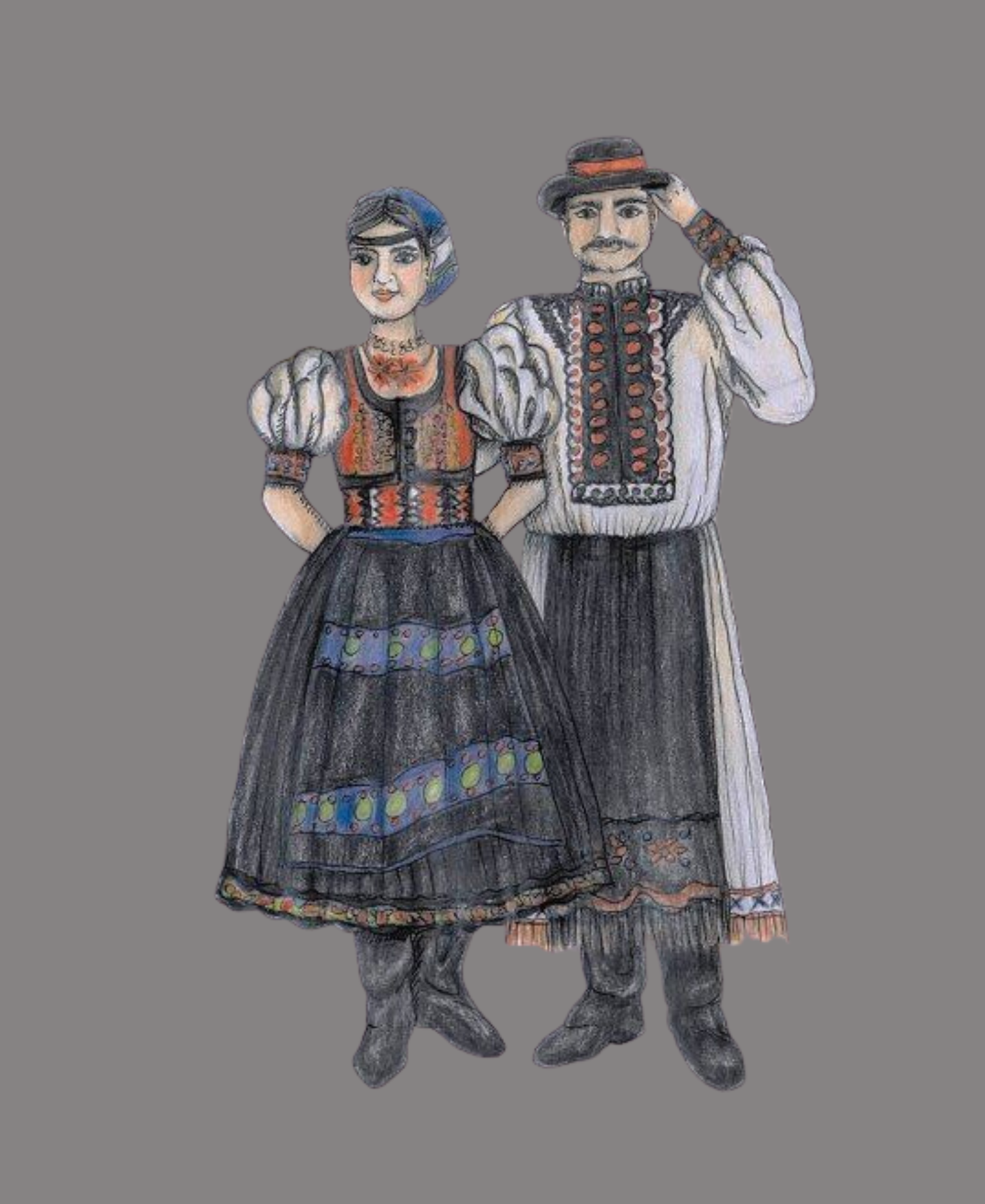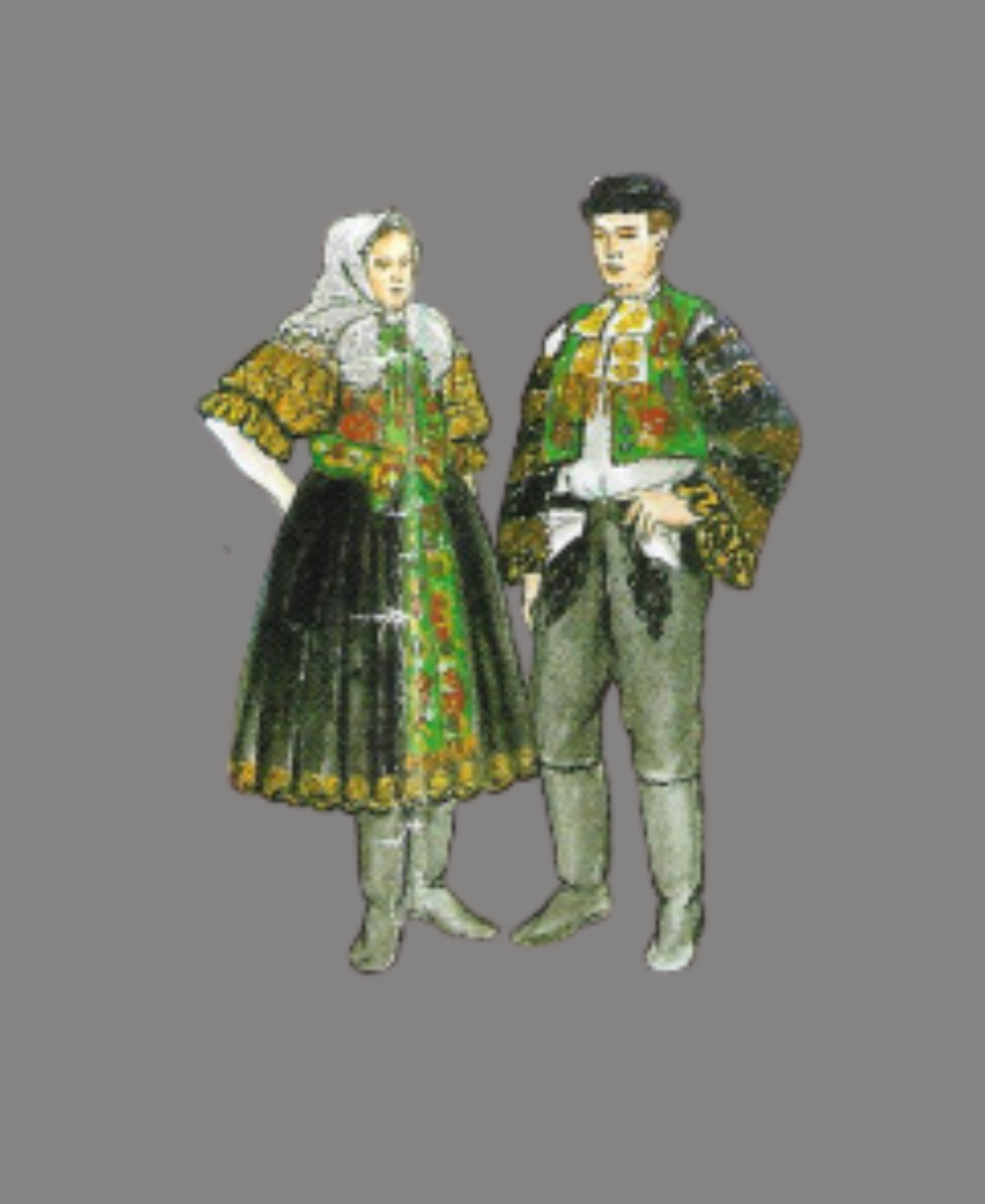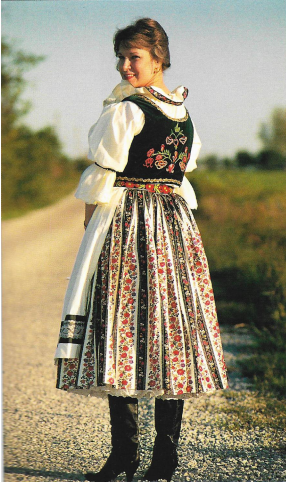Krása Kroje
Parts of the kroj
source: Mezi hudci: sla vnosti lidových písní a tanců v čechách a na moravě by Připravil Václav Frolec
There are many types of headdresses used by women. A young woman wears a flower wreath; admirers will give the woman ribbons which she ties onto her wreath. On her wedding day, the woman adorns a richly decorated headdress with flowers, beads, and mirror pieces. The mirrors reflect off any jealousy people might look at her with. During the ceremony, her female relatives replace her wedding crown with a kerchief to symbolize her married status.
In the late 15th century, people would wear carved wooden shoes for day-to-day wear. In recent centuries, the peasantry adopted new footwear. While dark leather boots are often worn in regions of Czechia and Slovakia, many villages create their own distinct shoe. *find source
Examples of Regional kroj
Kyjov - The region's kroj is the most popular and recognizable in Czechia. Their distinctive red clothes represent Moravia’s rich vineyards.
Blata - The women’s folk costume uses lace, embroidery, beads, and fish scales to make beautiful and unique clothes.
Haná - Coming from a wealthy region, the men and women use expensive fabric, application, lace, etc. in their kroj.
Plzeň - The region’s folk costume became popularized due to Bedřich Smetana’s opera, The Bardered Bride. The look is easily spotted because of the large, elaborate headdress.
Dobrá Diva - Both the detailed, floral embroidery patterns over the cuffs and the cross stitch motif along the sleeves give the kroj its distinct look.
Trnava/Hrnčiarovce - Due to the similarities in the regional kroj, Trnavsky kroj pieces often get mixed together. Its metallic embroidery and embroidered floral ribbons stand out.
*This is only a small selection of kroj in Czechia and Slovakia from the past few decades. Each village has its own kroj style; therefore, kroj cannot be generalized for the country, region, or time period.
History and culture
Women’s Texas kroj
The kroje style we see today has its beginnings in the early 15th century, consisting of a simple head covering, a blouse, and a woolen, pleated skirt. Over time, the kroje adopted a different style. The Pleats and gathered lace reflected the Renaissance era. Bell-shaped skirts originated in Turkey during the Baroque period. Over the past few centuries, industrialization and manufactured textiles changed the style and creation of kroje.
During serfdom under the Hapsburg Empire, peasants demonstrated their individuality and nationalism through elaborately decorated clothing. Apart from the regional variations of kroje, villages use specific embroidered motifs to represent themselves. Kroj are usually inherited, and each generation will tailor the outfit, leaving their personal stamp.
us czechs
There are Czech-American communities throughout the United States. Along with state competitions, there is an annual Miss Czech Slovak US pageant. The contestants wear handmade kroj which the judges rate on accuracy and originality. Afterwards, the winners serve as cultural ambassadors; the Queen tours Czechia and Slovakia, wearing her kroj consistently while making connections and demonstrating US-Czech and Slovak culture.
Men’s Texas kroj
Some families will begin work on a girl’s kroj from birth, slowly adding to it over time. Once the girl learns how to sew, she adds personal touches to each piece. Alternatively, Czech-Americans will buy vintage kroj from Czechia or Slovakia.
In Texas, wool skirts are often substituted for linen or cotton due to the hot weather. Furthermore, individuals embroider Texas motifs, such as bluebonnets or stars on their kroj; Men add a bolo tie to their assemble. Yet, Texas Czechs also strive for authenticity, following the instruction of their elders.
Sources
Benža, M. “Kroje Slovenska.” Illustrated by M. Ondrušková. Bratislava: Slovenská kartografia, 1991.
Gallup, Sean N. Journeys into Czech-moravian Texas. College Station, TX: Texas A & M University Press, 1998.
Kuča, Jan. “Folk Costume in the Czech Republic.” Illustrated by Pavla Hampton. Ostrov: Muzeum Ostrov Lidových Krojů, 2021.
Letowski, Jan. “Folk Costumes from the Vonnie Brown Collection.” Slovak Style - Folk Costumes from the Vonnie Brown Collection, 2023. https://www.museumofethnicdress.com/slovakstyle.
Martin, Pat. Czech touches: The Czech book: Recipes, history, Folk Arts, North American Czechs Coast to Coast. Iowa City, IA: Penfield Books, 2012.
“Miss Czech-Slovak US Pageant Documents.” Miss Czech-Slovak US Pageant, 2023. https://www.missczechslovakus.com/pageant_documents.
Šimša, Martin. “Tailor’s Guilds and Their Influence on the Formation Of Women’s Rural Dress in Central Euorpe in Early Modern Times.” Journal of Ethnology, May 2015, 41–65.

